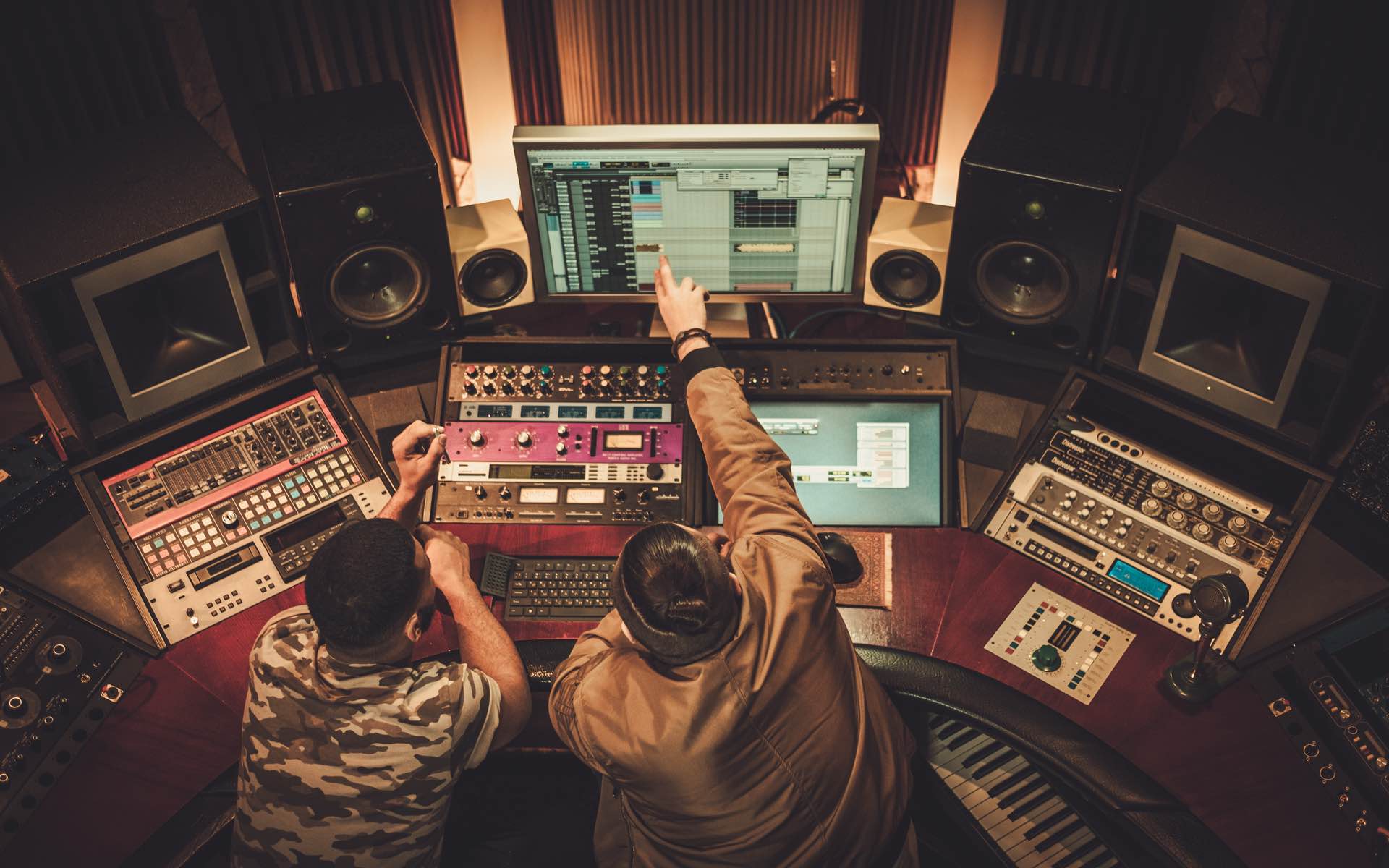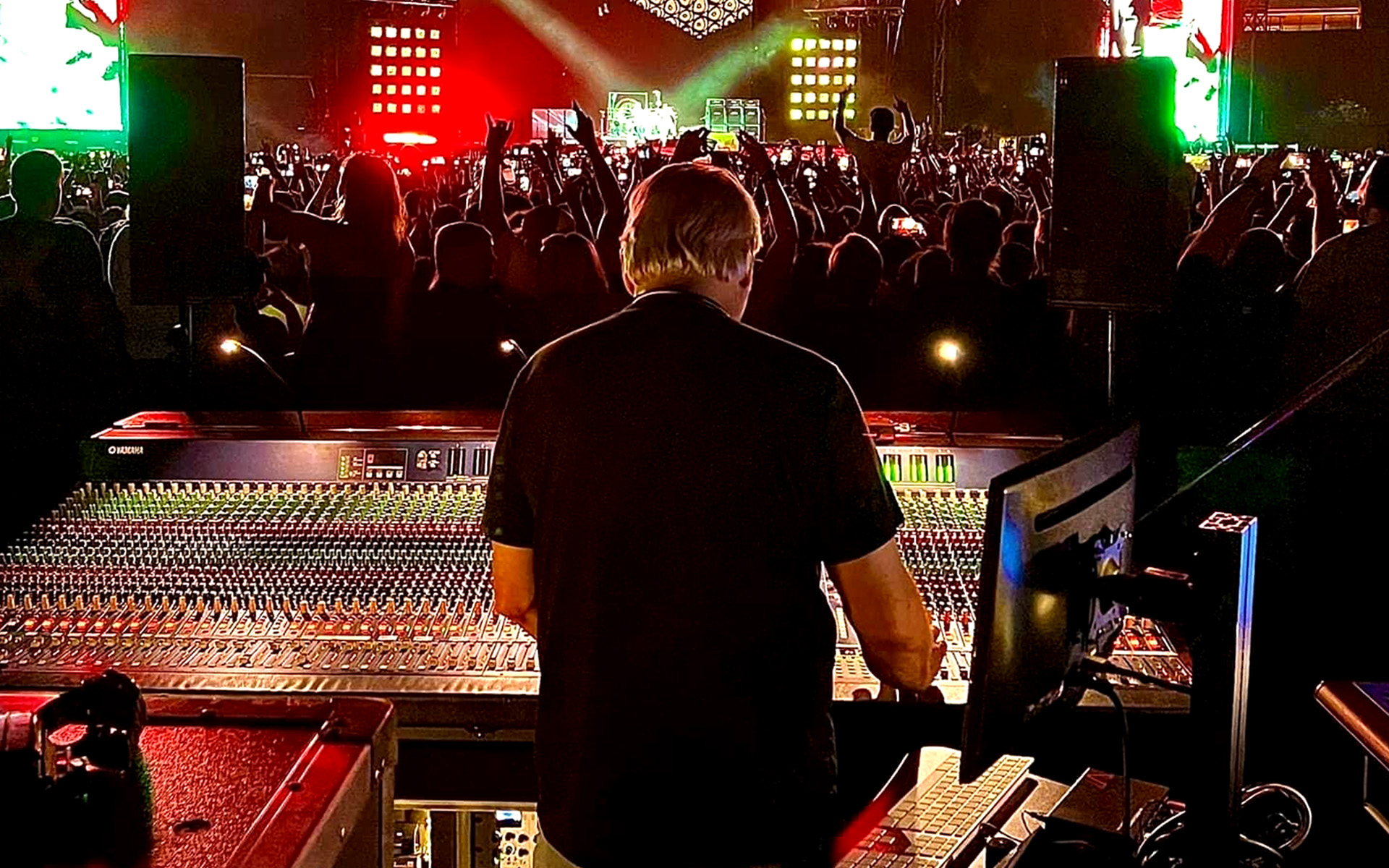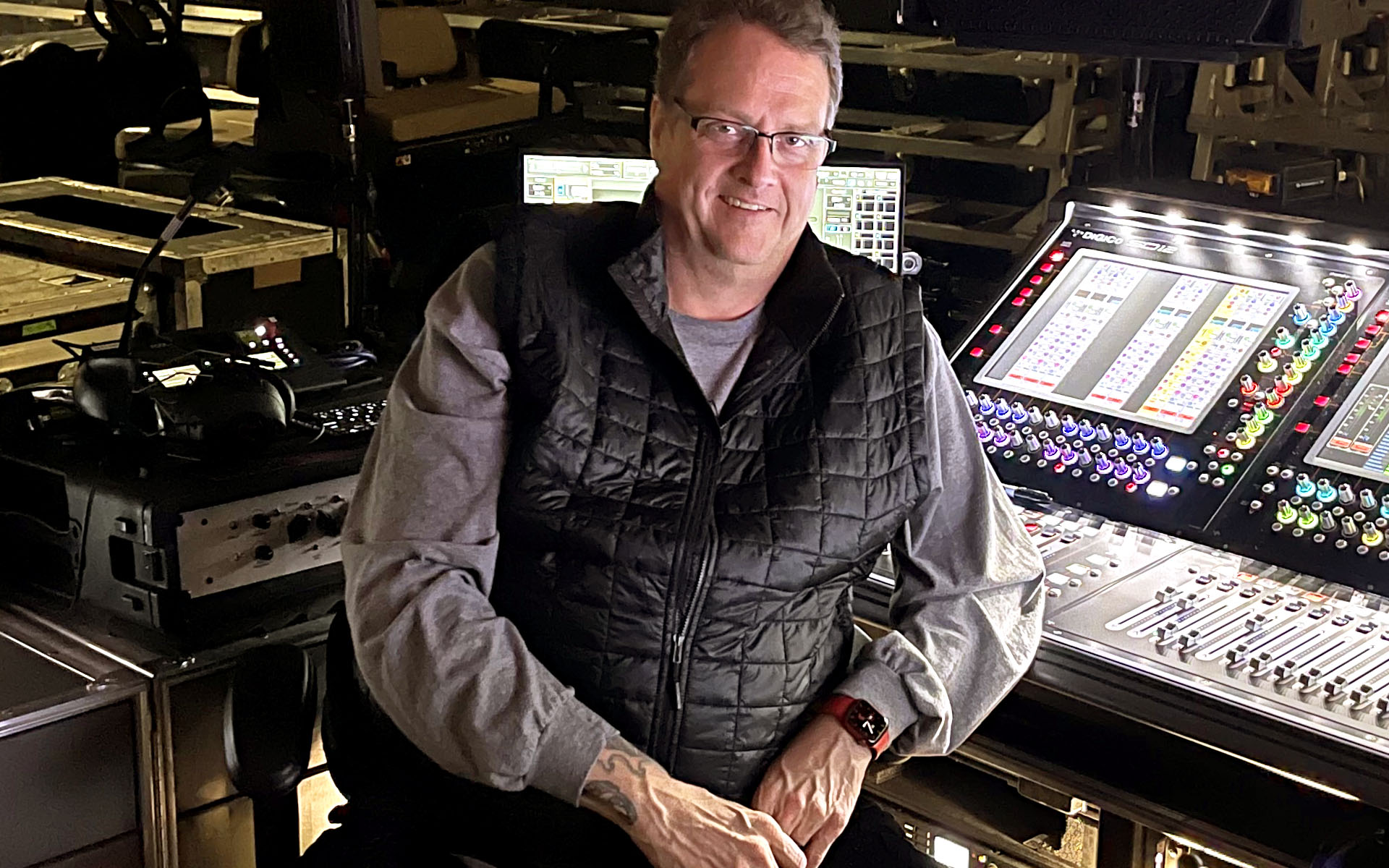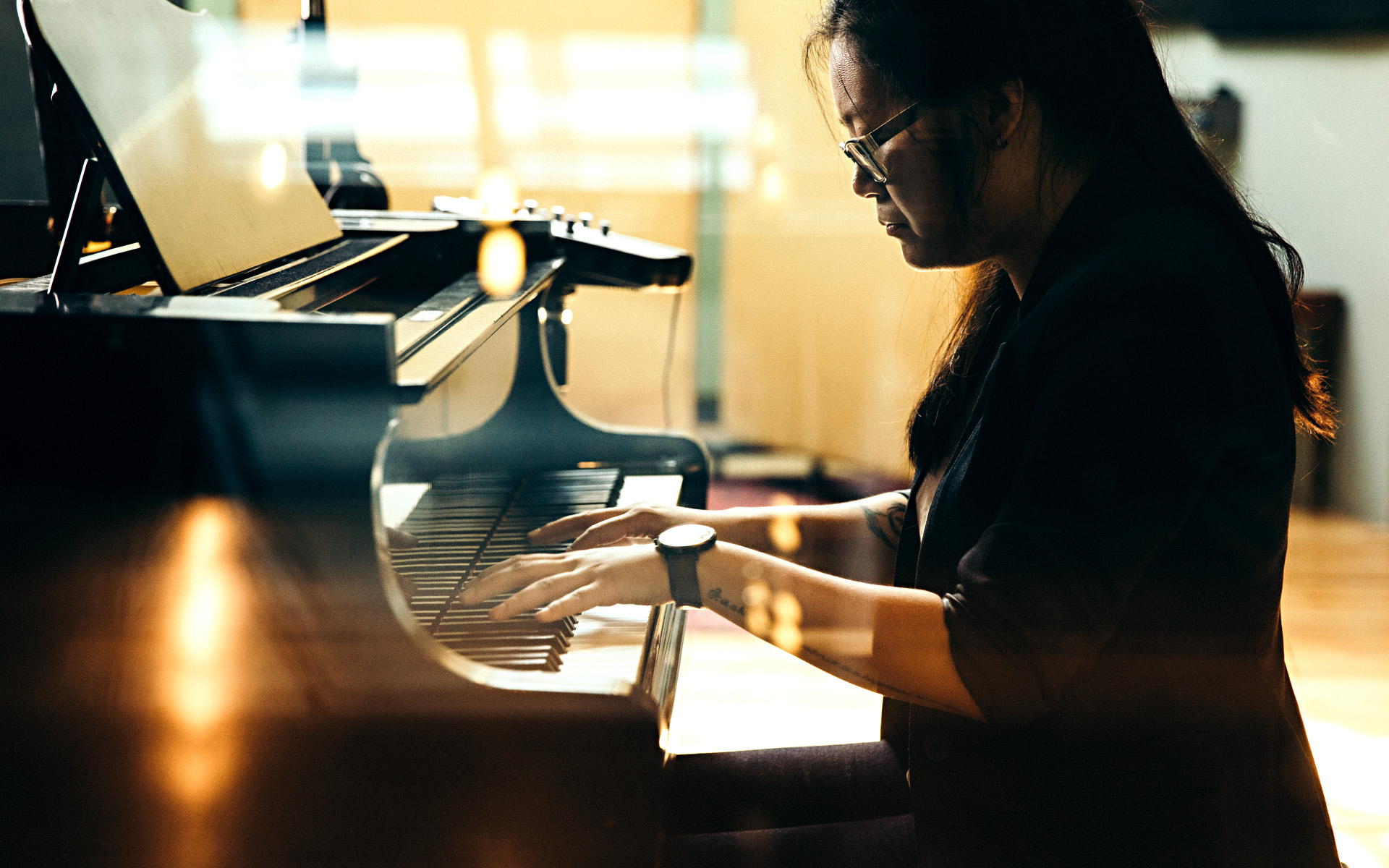The following information on mixing music is excerpted from the Berklee Online course Art of Mixing, written by Richard Mendelson and Alejandro Rodriguez, and currently enrolling.
Sound mixing is a combination of art and technology with the end goal of creating a new sonic reality. A good mix is not good enough if only the technical aspects are taken into consideration; it must also transmit a song’s message and enhance its emotions. A mixing engineer tows this line carefully, always putting the musical aspects first and foremost, while applying their technical skills, deep knowledge of processing gear, and interpretation of visual levels to accomplish an artistic result.
Below are some of the basics of mixing music, including its history, sound mixing techniques, and the various responsibilities of a mixing engineer.
What is Sound Mixing?
If we need to define sound mixing with a single word, that word would be balance. Mixing involves combining all the sounds received from the multitrack recording and balancing them in levels, making some louder than others. At the same time, a mixing engineer will balance them in terms of panning, placing them in the stereo field: left, center, right, or anywhere in between. They will also balance frequencies, brightening some sounds, darkening others, taking some frequencies away, and using depth as another balance tool, to give the listener a sense of closeness or distance of a sound in a space.
A Brief History of Sound Mixing
The music industry has evolved immensely since it began more than a century ago. The origins of music recording involved a single step: musicians surrounding a horn, playing and singing as loud as they could, and mixing themselves by way of distance to the horn. Technology evolved from recording to a cylinder to recording to a disk, then to tape, from mono to stereo, then multitrack.
Multitrack
Multitrack means not all the musicians need to be playing at the same time. It also allows the addition of more lines, such as more guitars playing, or more voices in a chorus, more violins in the string section, and fixing mistakes of individual performers instead of the whole band. Back in the ’60s, mixing engineers dealt with few tracks and big consoles. Now, they mix several tracks—it could be more than 100—of different sounds in a music performance, either trying to recreate the original or intended musical balance, or creating something new.
Digital Audio Workstations (DAWs)
Today, it’s most common for all of this to occur inside a computer, in the digital domain, using a DAW, instead of the “old-fashioned way,” using multitrack tape machines and analog consoles. A modern DAW will contain the equivalent of one or more multitrack tape machines, a host of outboard processing gear, an assortment of synthesizers and other virtual instruments, and a big, powerful mixing console, capable of various sound processing jobs plus automating almost every task—not to mention the capability of recalling instantaneously all settings from any mix. No wonder DAWs have become the standard mixing platform, even though discussion continues as to sound quality comparison between both environments.
Read: What is the Best DAW (Digital Audio Workstation)?
Mixing Techniques
Now that we know what music mixing is and its brief history, let’s get into some mixing techniques.
Level Adjustment
Level balance is the first thing that comes to mind when mixing. We are talking about relative loudness.
- What instrument or instruments should be featured and at what time?
- Does a certain musical event, such as a guitar lick or a sample, create an interesting musical result that should be featured or downplayed?
Certain music genres have specific common practices as to what is heard more prominently and what is considered a “color” detail.
Panning
Panning refers to the placement of sounds in the stereo field, between left and right, and anywhere in between, including center. In order to work on panning, you first must have a multichannel reproduction system. Two of the most common types are: surround and stereo. Surround is mostly used in video-related sound work, while a pure music mix is still done more often in stereo, since it is more often consumed in stereo than it is in surround.
Surround
Surround refers to a recording and playback system, which reproduces music and sounds in general coming from the front and back of the listener. There have been different attempts to establish a standard of listening in surround for decades. The most common format used nowadays is known as 5.1, which means there will be five channels plus a special one (therefore the system needs six speakers to reproduce the recording).
The six channels are grouped like this: Left, Center, Right, Surround-L, and Surround-R, plus a special channel named LFE. The first three are obvious. The last three need to be clarified. Surround-L and Surround-R are the speakers placed left and right, behind the listener. The LFE is a sixth channel only playing very low frequencies. The name LFE comes from its use in movie theaters, as a Low Frequency Effects channel.
Stereo
Stereo means reproduction of a sound image using two channels, left and right—those channels being reproduced through speakers or headphones. This stereo imaging creates the illusion of sounds coming from anywhere between the left and right speakers, with a perfect phantom image in the center when the same signal, same level is present on both sides. Some songs use really drastic tactics with their stereo mixes: try isolating the left and right channels on the following songs:
Muting Techniques
Sound mixing also includes the knowledge—or the hunch—of what can be taken out of the mix. This could include obvious examples, like any unwanted noise, to more creative decisions about whether to use a particular instrument at all, or at least on some portions of the song, even though it was originally recorded there. Here are some examples of what to mute:
Noise
From an electric guitar track, every time the guitar is not playing. Leakage from headphones or any other sounds on the strings or background vocal tracks. You can see a trend here. Any noise. In one track or in multiple tracks, only once or many times, depending on the recording. Is that a rule? Not necessarily, because sometimes leaving breathing or some other natural noises from the singer or performer makes it more intimate, up front, more human.
Building up an Arrangement
Having a structure where all instruments play all the time could be a little bit boring. Try muting some of them on the first verse, then adding some on the second, then some more on the chorus, having a second chorus with more instruments than the first, etc.
Breaking Down a Moment of the Song
Similar to the above, but this time, instead of adding tracks (instruments) as the song progresses by muting at the beginning and gradually unmuting as the song continues, you can temporarily mute a big group of tracks after they have been playing for a while in order to create a breakdown, which will obviously give more importance to the following buildup. It will highlight the remaining sounds when the rest are muted.
Building a Mix
There are two basic ways of building up a mix: from the bottom-up and from the top-down. They both refer to how you start adding tracks. In any case, the first step should be listening to all tracks, with a lower level position for all faders, to have an idea of what will be happening in the song. You can’t start one way or the other without knowing what else you will be dealing with. The names of the tracks are very important, but you also need to hear how they sound, before you temporarily mute them and start building your mix with one of the methods.
Bottom-Up Mix
A bottom-up mix starts with the foundation of the mix, the basic tracks, i.e., the rhythm section and/or low end instruments, and then moves to the higher frequency instruments and ending finally with the lead instrument or melody instrument. Probably more mixing engineers work this way than the other. The danger of this method is not leaving enough space for the leading tracks; be sure to avoid that.
Top-Down Mix
Mixing from the top down means that you start with the lead or melody instrument and work your way down to the foundation. A typical example would be this: you start with the lead vocal track, place it in its full expression, add all additional vocal tracks, and then start adding the instrumentation. This is typical of singer/songwriter mixes, or vocal-oriented mixes. It could feel strange working that way at the beginning, but you can get used to the concept.
Rough/Static Mix
To start out, you’ll have a “rough mix,” which usually does not have automation or attention to many details. A rough mix will be the stage when all tracks have been added and we are showing a musical and sonic idea of the song, not only levels and panning, some frequency and depth treatment as well, but without enough time spent on details yet. It will usually be static, with no automation. So, it can also be called a “static mix.”
Dynamic Mix
Once the static mix is established, you can start working on the details, including automating different parameters, like levels, panning, or muting; adding more frequency or depth processing; and more additional effects. This will be a “dynamic mix.” Parameters are changed along the song.
Master Fader
Don’t forget to visually monitor the master fader, the stereo bus. Every DAW or real console uses a stereo bus, which is a signal path where all channels or tracks to be mixed send their signal in order to be combined into two new outputs: Left and Right. The stereo bus receives and combines all individual tracks outputs, concentrating them into this unique stereo (left and right) output signal, which is the result of the mix.
Read: What is EQ in Music? 10 Audio Equalization Tips
Get Started Mixing Music
There are so many variants in a mix that all the steps we will be covering here cannot be seen as one-at-a-time only steps. Setting levels and panning can be done simultaneously. Having basic tracks done that way, and then adding additional tracks, will probably force you to go back to the basic tracks and readjust them. It is a never-ending process of balance, initially rough, then more accurate.
Mixing can become addictive. It is challenging and enjoyable, but remember to take breaks. You could get so much into the details that it is easy to lose perspective of the big picture, the music, the message of the song you are mixing. Leaving the work to be checked after a coffee break or on the following day will give you fresh ears to hear the result of your work as a whole. Asking opinions of others, or checking others’ first impressions could be useful too.
If you’d like to learn more about music mixing, check out the courses that Berklee Online has to offer:
- Art of Mixing
- Advanced Mixing Techniques
- Mixing and Mastering with Pro Tools
- Advanced Mixing and Mastering with Pro Tools
- Live Sound: Mixing and Recording
- Mixing and Mastering for the Electronic Musician












